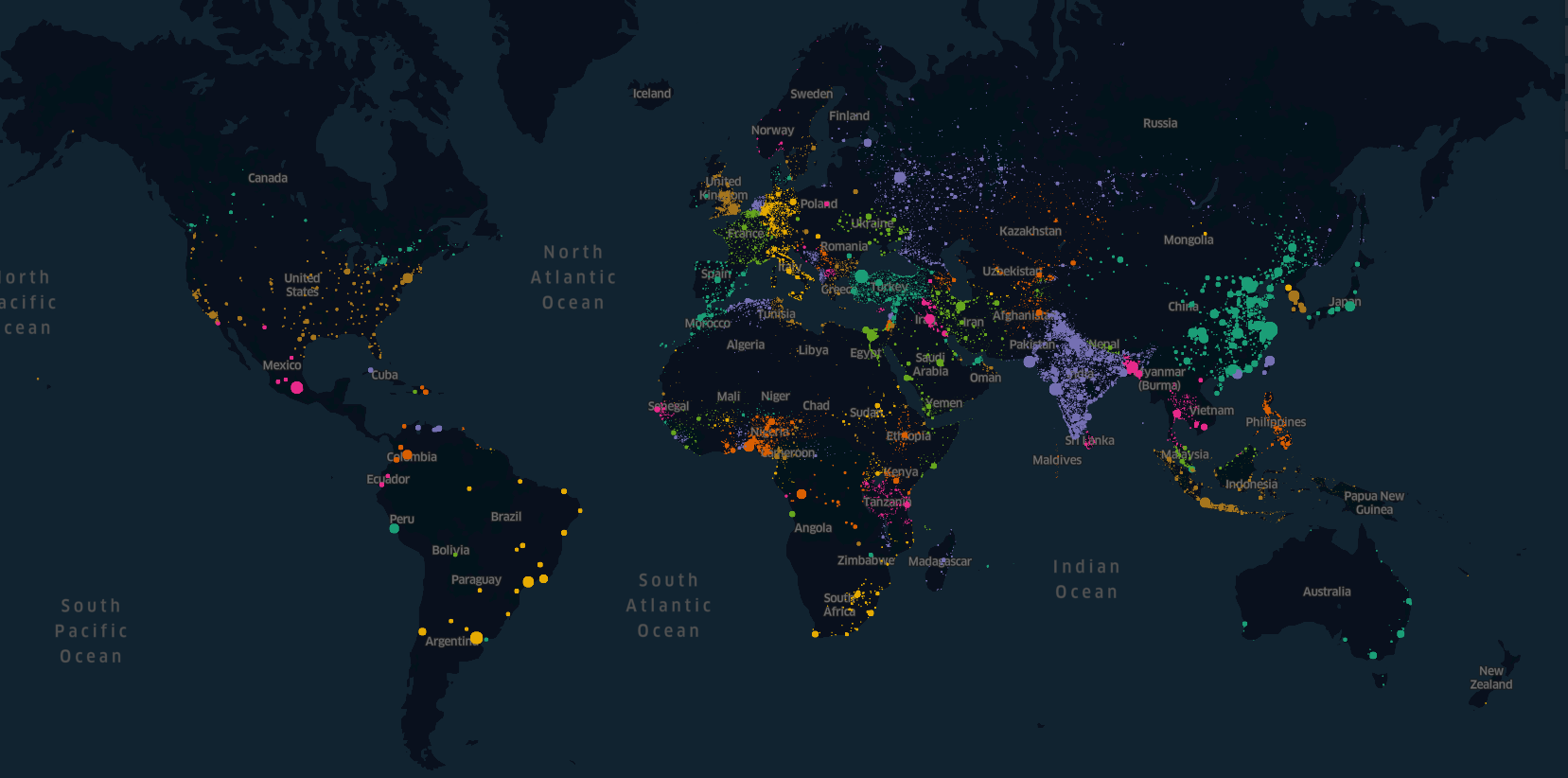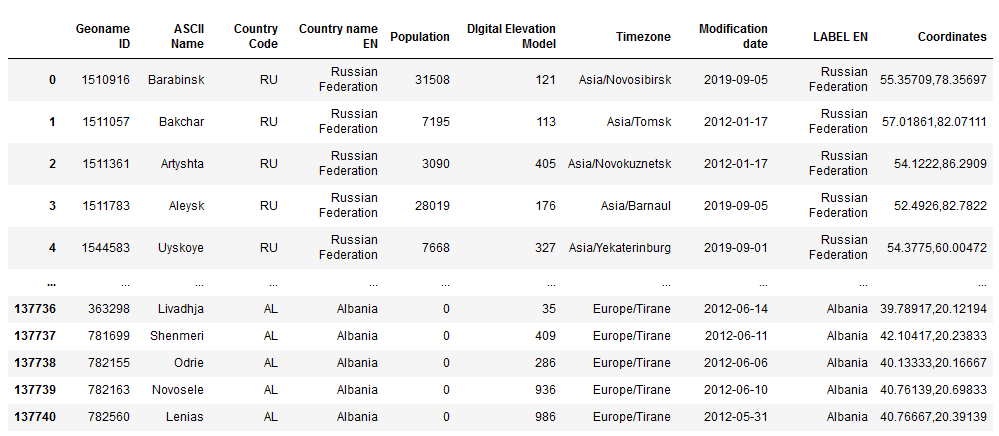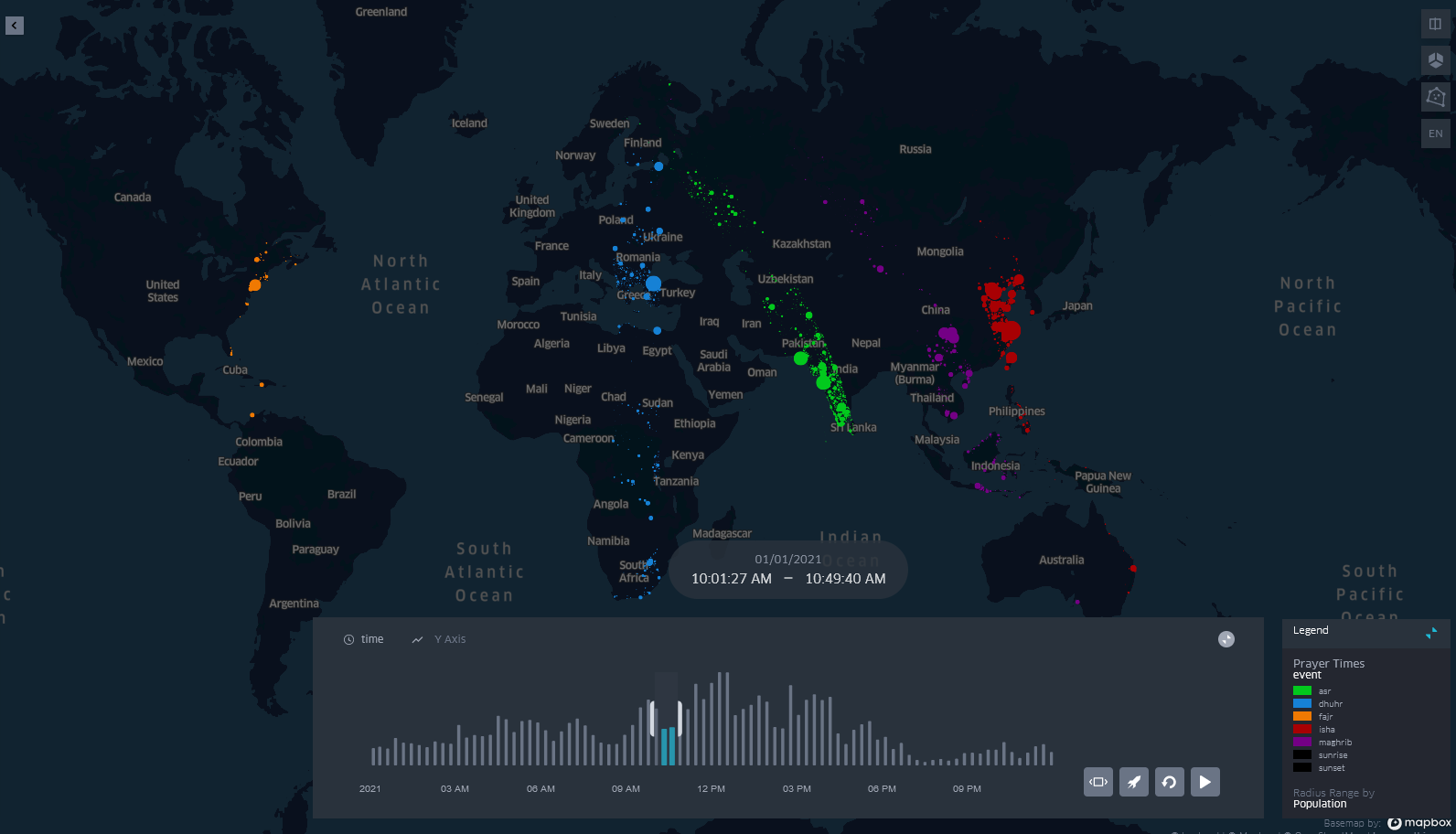Fact-checking a claim about the muslim call to prayer with open data

- Fact-checking a claim about the muslim call to prayer with open data
- Azan Basics
- The Process
- Source Code
- References
The original purpose of this writeup was to create a visualization for how the Azan (The Muslim call to the five daily prayers, see details below) moves across the globe during a period of 24 hours. However after doing this, I remembered reading an article about a decade ago which claimed that the Azan occurs non-stop around the world. That is, there isn’t any time during the year when the Azan isn’t happening somewhere in the world. I am curious to know if the claim is true. Trying to search for any evidence for this claim leads to an unsubstantiated, vague description and some questionable animations with no data to back them up. This calls for a fact check! Let’s walk through how we can use python, freely available data and some heuristics to prove/disprove this and see what we find! All source code is open and reproducible. The visualization I ended up making is in the video below and shows how the Azan moves across the world during a 24H period for a given date:
Azan Basics
Muslims pray five times a day, each prayer is to be performed during a specific interval of the day, determined by the position of the sun. The timings are not fixed (wrt the 24 hour clock) and change as the length of the day and night varies throughout the year. The Azan occurs at the start of each interval for the five prayers (Fajr, Dhuhr, Asr, Maghrib and Isha).
There are slight differences in the way the solar angles are calculated for Fajr/Isha prayers, in addition there are edge cases at higher latitudes (for example the sun never sets in some places during the year) which have to be treated differently.
The Process
In order to determine if the original claim is true we have to:
- Determine locations in the world where the Azan occurs.
- Determine Azan times at all locations from step 1 for every day of the year.
- Determine if there is any time during the entire year where none of the locations above have the Azan happening.
We will be using some assumptions during this process, which we’ll walk through below. To make these clear, all assumptions made are preceded by the [Assumption] tag.
1. Determine locations where the Azan occurs
Ok first things first, we can’t expect the Azan to occur at every single point on the globe. The Azan is given whenever muslims pray in congregation. [Assumption] A good proxy for prayer in congregation (and hence a place where the Azan occurs) is a mosque, although muslims frequently pray in congregation outside of mosques as well. Ok great, so we need a way to determine where all mosques are in the world! A dataset listing all mosques in the world does not exist. However a Deloitte study estimated there were 3.6 million mosques around the world, projected to reach 3.85 million by 2019. Thus when the study was conducted there was 1 mosque for every 500 muslims in the world. Maybe we can come up with a heuristic absed on this information?
The GeoNames geographical database provides a list of cities around the globe with a population of >1000, along with their lat/longs and estimated population. Here’s what it looks like:

PEW has a dataset of religious composition of countries around the world.

Ok let’s combine all these sources of information: Multiply the city population from GeoNames with the muslim percentage in the country the city is in to find the estimated number of muslims in each city. [Assumption] We’re ignoring all rural (non-city) areas and assuming that the PEW country-wide percentages are applicable to cities. Since this assumption is in all likelihood, not valid, we’ll compensate for it by only considering cities with > 1000 muslims, double the 1:500 mosque:muslim ratio we saw above (and Assuming such cities will have a mosque or a prayer in congregation).
Ok, we’ve been making a lot of assumptions but do they actually make sense? Some Googe-Maps searches for “mosque” in a randomly selected sample of the cities we find using the criteria above shows that this assumption is reasonable, and pretty much all of them do indeed have mosques. The only exception I found to this rule was in places where the PEW survey had estimated a Muslim population of 1%. I assume this happened because PEW rounds up all population numbers in the range [0 - 1]% to 1%, so we’ll special case such countries, and our final heuristic for filtering cities will be:
- If a country has a >1% Muslim population:
- Only include cities where the estimated muslim population in the city >1000
- If a country has a <=1% Muslim population:
- Only include major cities (population > 1 million).
- If a city’s population is unavailable (which is the case for some cities in the GeoNames dataset):
- Only include cities in countries with a muslim population >50%
Our final heuristic is tuned towards precision rather than recall meaning the criteria for inclusion is strict and we’re less concerned with missing some cities with mosques/muslims-praying-in-congregation, and more concerned about our heuristic being strict enough to not over-count. The original dataset has more ~1.2 Million cities, after applying our filter, we’re left with just 23006. These cities are mapped using kepler.gl in the image below, the colour represents the country they are located in, the size is weighted by population:

2. Determine Azan times at all locations
As we saw above there are a few different ways and edge-cases in calculating Azan times. For the purposes of this experiment, we’ll use the python version of the PrayTimes library, which includes different methods of calculating Azan times as well as high latitude corrections built-in. We’ll iterate over all cities in our filtered list, and calculate the Azan times for each day of the year. For the purposes of the calculation we’ll use the University of Islamic Sciences, Karachi method which sets the angle for both Fajr and Isha prayers at 18°. This is a simplifying [Assumption] because different mosques will use different (equally valid) methods.
Since the PrayTime library also provides sunrise/sunset times, we’re able to sanity check the output by selecting a few random locations and ensuring that the times predicted by the library are within a minute of publicly available sunrise/sunset times. I also cross-checked Azan times at several cities with publicly available prayer times and found them to be accurate.
 This image shows the sunset time from PrayerTime matches the sunset time from Google to the exact minute (The time on the map is GMT)
This image shows the sunset time from PrayerTime matches the sunset time from Google to the exact minute (The time on the map is GMT)
3. Visualizing Azan times
Let’s visualize what we have so far, since it makes for a nice way of conceptualizing how prayer times move around the world. We’ll do this for one day of the year. I discovered kepler.gl (thanks Uber!) which makes it super-simple to visualize geo-data and supports visualization from a CSV file which makes life easy since we’ve been using Pandas dataframes for our work. Here’s what the dataframe that we will export to Kepler looks like:

After uploading the data, this is what we end up with (for a given time range):

Each dot represents one of our filtered cities at the time (within our range) when Azan occurs there, the color represents which of the five prayers the Azan is for. The video at the top of this article shows this animated for one day. Someone with more webdev experience can probably make this into a live-view where there’s a live map showing you where in the world the Azan is occuring in realtime.
4. Check if the Azan is continuously occuring
Let’s generate the azan time data for each city by looping over each day in the year. For each day we will check if for each minute of the day, there is atleast 1 city in our list where we have the Azan. Technically since the Azan is about 2-3 minutes long, we can get away with checking every other minute. However remember we said we’re focusing on precision, not recall so we’ll just check every minute. After stuffing our time-check into a loop we find that there is no minute where the Azan isn’t occurring somewhere in the world. There are 11 (non-contiguous) minutes in the whole year where it occurs at only three cities, which is the ‘weakest link’ but I have manually verified the presence of a mosque in or near those cities via Google Maps.
There we have it! An answer to a question I had a decade ago. Keeping in mind we made some assumptions this of course isn’t a definitive answer, but it’s a good enough approximation for me to be confident that the results are valid! If someone would like to point out any obvious flaws or criticisms I would be happy to hear/update this article!
Source Code
All source code and links to datasets are available in this github repository.